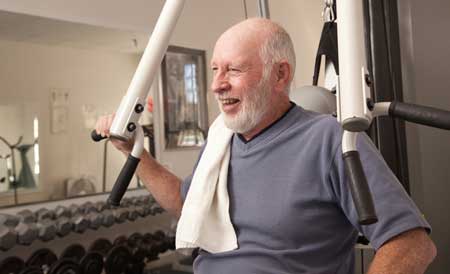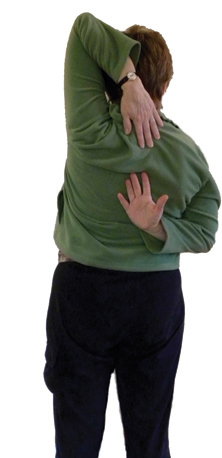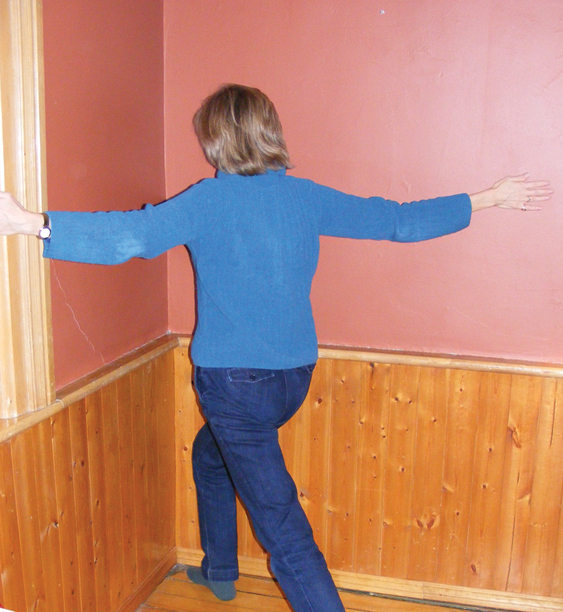Myths About Exercise and Aging
By: Jan Cochrane, RN, BSN, CDE
People often pass along myths or misconceptions from one generation to the next. For instance, your mother may have told you it’s important to wear clean underwear in case of an accident, something she probably learned from her mother. But nurses will tell you that no one in acute care–or anywhere for that matter–even notices something so trivial during the time of an accident!
Here are some myths about exercise and aging that researchers have studied over the years and proven to be wrong:
Myth #1: Older people shouldn’t do demanding activities such as raking leaves or shovelling snow.
First of all, it is difficult to define “older”. There are some 50-year-olds who cannot keep up with 70-year- olds who have an active lifestyle. If you are generally active, doing heavier tasks shouldn’t be a problem. However, if you haven’t been active, start slow. Walking is always a safe way to start.
The great ball player Satchel Paige (1906-1982) once asked this excellent question: “How old would you be if you didn’t know how old you was?”
Myth #2: As you get older, you should avoid lifting heavier objects such as groceries.
Au contraire! This is the time to increase strength in the muscles by exercising at least twice a week. It can be as simple as carrying the laundry or climbing stairs. Remember: “Use it or lose it.”

Myth #3: Don’t exercise if you have heart problems or high blood pressure.
Don’t forget that your heart is a muscle that needs exercise just like all others! If you have had a recent heart attack, check out programs that guide you to getting exercise back into your life. You could be doing more harm by not moving.
One last reminder: “Running late does not count as exercise.”
Learn more from these Active Aging Canada resources:
- Preventing Falls in Older Adults
- The Power of Strength Training for Older Adults
- Exercise for Your Heart’s Sake: It’s Never too Late
About the Author
Jan Cochrane, RN, BSN, CDE, has worked in home care and gerontology. She is a diabetes educator with a passion for encouraging healthy lifestyles.
Click Here for print PDF file – Active living – Myths About Exercise and Aging
Simple Exercises to Keep Older Adults Moving – Part 3
By: John C. Griffin, MSc.
Functional mobility means being able to do the things we need to do in normal daily life efficiently and without undue fatigue or pain. Good functional mobility is part of a healthy, safe, and active life.
This is our third posting on functional mobility. In each posting, we offer you a screening test that helps you spot problems with functional mobility.
Then we show you how to use your findings to design exercises for yourself that will improve your functional mobility.
In this test, we focus on the upper body. This includes shoulder flexibility or ‘range of motion’. This is important for things like reaching up to a high shelf, combing your hair, putting on your clothes, reaching for something in the freezer, or reaching for a seat belt.
A warning before you start:
If you have significant or increasing pain with any test or exercise, you should stop right away. Get advice from a health care provider.

How to do the Back Scratch Test
- While standing, reach one arm up .
- Bend your elbow to pat your back.
- Reach your fingers down your back as far as you can.
- Put your other hand behind your back and reach your fingers up your back as far as you can.
- Try and touch your fingertips.
- Try again. If your fingers do not touch, guess how far apart your middle fingers are.
- Repeat, switching the position for each arm.
How did you do?
Score a “2” if you can touch your fingers.
Score a “1” if you are within 10cm (or 4 inches).
Score a “0” if you are more than 10cm (or 4 inches) OR if you have pain while doing it.
Score the test: Right arm upper ____ Left arm upper ____
‘Corner Wall Stretch’ — An exercise to improve your upper body flexibility
If you scored 0 or 1 in the Back Scratch Test, here is an exercise for shoulder flexibility. This exercise will improve your posture. It will also increase the range of motion in your shoulder. Improved flexibility decreases your chance of injury.

How to do “Corner Wall Stretch”
- Face into an open corner of a room.
- Place one foot into the corner with your hands flat against the walls and your elbows almost straight. Your arms are slightly below your shoulders.
- Lower your shoulder blades (scapulae) and pinch them together.
- Contract your abs (stomach muscles). Avoid arching your back.
- Slowly bend your leading leg and slightly lift your chest. Ease into the stretch in a slow and controlled way.
- When you can feel the stretch in your chest, hold the position for 12 – 15 seconds.
- Return to standing. Repeat 2-3 times.
About the author:
John C. Griffin, MSc., was a professor in the Fitness and Lifestyle Management Program at George Brown College in Toronto for 37 years. He is now a private consultant, speaker, coach, and writer for public and private sector organizations. John has authored more than 60 publications, numerous manuals, and a textbook published by Human Kinetics, Client-Centered Exercise Prescription. John is currently doing research on the functional mobility of adults 50-70 years of age.
Click Here for print PDF file -Active Living – Simple exercises to keep Older Adults Moving – Part 3

- Categories
Recent Posts

